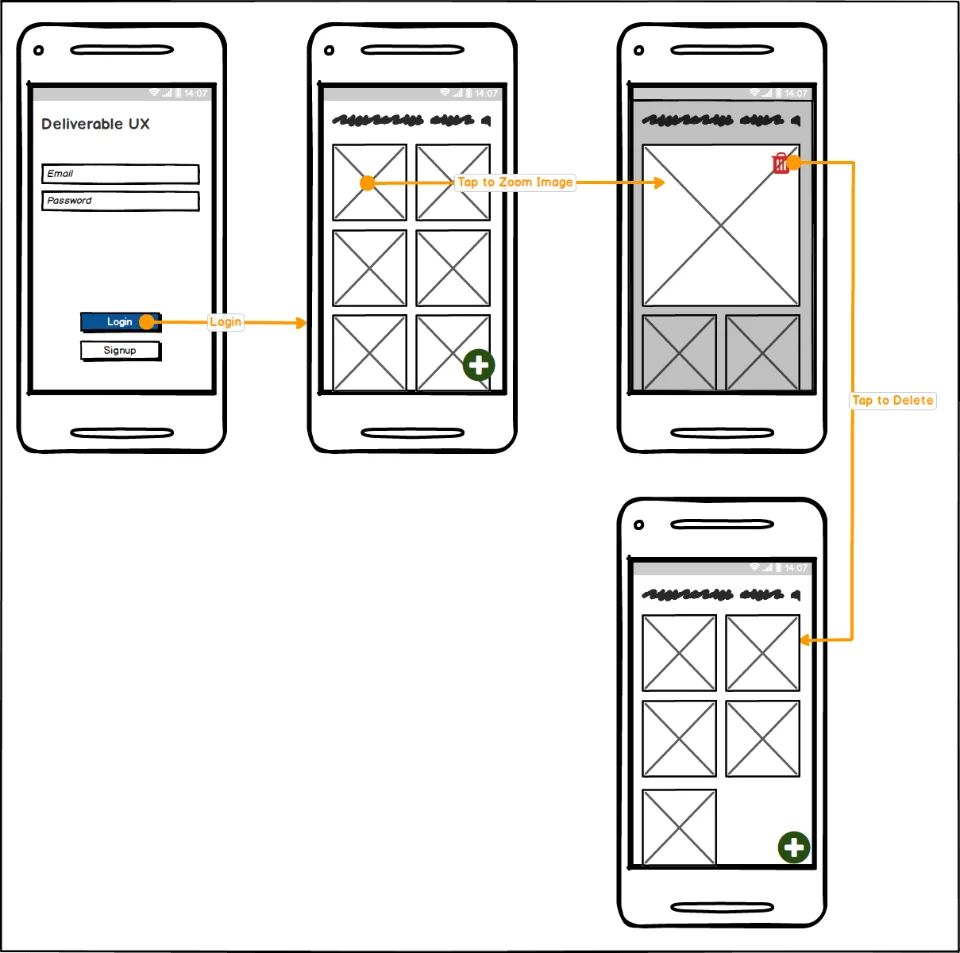Unlocking Design Solutions with the 5 Whys Method
As a UX designer, it's important to understand the root causes of user problems and pain points in order to create effective and intuitive designs. The 5 Whys method is a simple and effective tool that can help designers do just that. In UX design, the 5 Whys method can be used to identify and understand user or organizational problems and pain points.
Wes Hunt

As a UX designer, it's important to understand the root causes of user problems and pain points in order to create effective and intuitive designs. The 5 Whys method is a simple and effective tool that can help designers do just that. In UX design, the 5 Whys method can be used to identify and understand user or organizational problems and pain points. It can be particularly useful for inexperienced researchers identifying problems that are not immediately apparent or that require deeper exploration to fully understand. In this article, we'll explore the 5 Whys method in more detail, including how to use it in UX design and tips for making it more effective.
What is the 5 Whys method?
The 5 Whys method is a problem-solving technique that involves asking a series of "why" questions in order to understand the root cause of a problem. The idea is to keep asking "why" until you get to the root cause of the problem, which is typically more than the 3rd "why." This both digs into deeper problems but can expose multiple causes along the way. A major failure may have been caused by multiple smaller issues which can then be broken down into easier challenges to solve.
The 5 Whys method was developed by Toyota as a way to quickly identify and solve problems within the company's manufacturing process. It has since been adopted by a wide range of industries as a simple and effective way to identify root causes and find solutions to problems.
In UX design, the 5 Whys method can be useful for digging into user and organizational challenges. It reminds designers to delve deeper into the root causes of problems and identify potential solutions that may not be immediately apparent. By understanding the underlying causes of user problems, designers can create more effective and intuitive designs that better meet the needs of users.
Why Do We Use the 5 Whys Method for UX?
There are several advantages to using the 5 Whys method in user experience:
- It's simple to use: The 5 Whys method is a simple and straightforward way to identify the root cause of a problem. This can make it easier to understand and implement than more complex problem-solving methods.
- It's fast: The 5 Whys method can be completed relatively quickly, making it a good option for identifying and solving problems in a short amount of time.
- It encourages getting out: Using the 5 Whys, requires you to “get out” and talk to people. You can not be a UX anything without talking to people and figuring out how they think about problems.
- It helps identify root causes: By repeatedly asking "why," the 5 Whys method helps identify the root cause of a problem rather than just addressing symptoms. This can lead to more effective solutions.
- It’s a reminder to dig: It’s a good tool to get inexperienced interviewers to dig into responses from research participants. New interviewers have a tendency to get a superficial response and move on instead of getting to the underlying reasoning and mental models of the respondent. By continuing to ask “why” for each response you can discover multiple factors that caused a larger failure.
- It’s a flexible tool: As UX designers we spend most of our time focused on the users (as we should), and focus on tools for such. However, tools like the 5 Whys can be used anywhere there are problems to investigate. The original use case was for analyzing processes in an organization. UX designers can and should use their skills and tools with internal stakeholders and processes as well as external.
- It can enhance other UX methods: the 5 Whys can be used with usability testing, ethnographic research, user interviews, moderated customer feedback sessions to draw out root causes of a user’s experience. In addition to these, think about the 5 Whys when running internal activities like affinity mapping, or during planning.
How to Use the 5 Whys in User Experience
To use the 5 Whys method in UX design, you would first identify a problem or issue that you want to understand further. Usability testing sessions, You would then ask a series of "why" questions to try to get to the root cause of the problem. This can be done to understand your own challenges, when talking to any stakeholders, or during user research in interviews.
For example, if you are trying to understand why users are having difficulty navigating a website, you might ask:
- Why are users having difficulty navigating the website? They can’t find what they are looking for.
- Why are users struggling to find the information they need? The menu is unclear and hard to find what I’m looking for.
- Why are the navigation labels unclear? I’m having trouble reading the labels in the menu.
- Why are the navigation labels hard to read? This curvy and small font is hard for me to read.
- Why did the designers choose this font for the navigation labels? We’re not sure, the design agency said the CEO liked the look.
Yes, I’ve frequently encountered cases like this too. Often in the end no one actually knows why a specific decision was made, or if there was an untested assumption. In this case you are setting yourself up to figure out what you really need to understand and pursue further.
Imagine that a company has received feedback from customers that they are having difficulty using one of its products. The company decides to use the 5 Whys method to understand the root cause of the problem.
- Why did you (a customer) use our product less last month? I didn’t find it as easy to use anymore.
- Why do you think it is less usable now? After the last updates you released, I have a hard time finding my saved reports.
- Why did you not use the new built-in filters for reporting? I don’t think they fit my reporting needs, they’re for X and I need Y.
- Why do you need Y? _Y allows me to more easily format the data in Excel for my boss. _
- Why does your boss need the Excel report? She doesn’t, but Excel has pie charts that show what she needs to know.
Through this process, the company is able to identify that the root cause of the problem is an unmeant use case. The value isn’t always just in the last question, but in the answers along the way as well. You find out what the customer thinks about the product, how they use it, and maybe any unmet use cases that you can address.
Another example might be:
- Why are customers returning the product? Customer satisfaction has decreased recently according to our exit surveys.
- Why are customers dissatisfied with the product? Customer surveys indicate that they had different expectations from the product.
- Why is the product not meeting their expectations? In the surveys customers said that they thought the product would be useful for their need to share reports.
- Why did the product team not include this feature? The product team did not think this was a requirement or need from customers.
- Why did the product team not adequately research the needs and wants of the target market before designing the product? The product team was told user research was too time consuming and the sales team heard a competitor had the feature we released.
Through this process, the company is able to identify that the root cause of the problem is a lack of user research and too many assumptions. They can then work to improve their market research process in order to better understand the needs of their customers and create more effective products. The management team may also realize the importance of more upfront time spent talking to customers, instead of wasting development time copying an untested competitors’ feature.
By asking these questions and continuing to ask "why," you can eventually get to the root cause of the problem and identify potential solutions. You can then use this information to improve the user experience and your design process.
Tips for using the 5 Whys in UX Design
To make the 5 Whys method more effective, here are a few tips:
- Start with a clear problem statement: Make sure that you have a clear understanding of the problem you are trying to solve before you start asking "why."
- Keep it focused: Don't get sidetracked by tangential issues. Stay focused on the problem at hand and keep asking "why" until you get to the root cause.
- You may discover several causes along the way, most complex problems are a collection of several problems. By digging you can find ways to break up the problem into smaller parts that are easier to solve.
- Involve a diverse group: Encourage collaboration and involve a diverse group of people in the problem-solving process. This can help bring different perspectives and ideas to the table. As with any research, ask your questions across multiple, well-picked participants.
- 5 is really just a guide to get you to dig. It’s easy to just accept superficial answers, or to accept initial answers at face value. People aren’t trying to deceive us, but we have a tendency for avoiding discomforting situations, and don’t push enough.
Additional Information About the 5 Whys
Here are a few books that discuss the 5 Whys method and how to use it in problem-solving:
- "Lean Thinking: Banish Waste and Create Wealth in Your Corporation" by Daniel T. Jones and James P. Womack: This book provides an in-depth look at the 5 Whys method and other lean methods used to solve problems in the manufacturing process. It also includes practical examples and case studies to show how the method can be applied in a variety of settings.
- "The Lean Startup: How Constant Innovation Creates Radically Successful Businesses" by Eric Ries: This book discusses the importance of continuous innovation and the role of the 5 Whys method in the lean startup process. It provides practical guidance on how to use the 5 Whys method to identify and solve problems in order to create successful businesses.
- "Root Cause Analysis: The Core of Problem Solving and Corrective Action" by Duke Okes: This book provides a comprehensive overview of root cause analysis, including the use of the 5 Whys method. It includes case studies and practical examples to show how the method can be applied in different industries and settings.
Related UX Research Methods to the 5 Whys
Here are a few research methods that are related to the 5 Whys method and can be useful for UX design:
User Interviews
User interviews involve directly speaking with users in order to gather information about their needs, preferences, and behaviors. These interviews can be conducted in person, over the phone, or via video conferencing.
User Testing
User testing involves observing users as they interact with a product or service in order to identify problems or pain points. This can be done through usability testing, which involves having users complete specific tasks while being observed, or through more casual observations of users interacting with the product.
Focus Groups
Focus groups involve bringing together a small group of users to discuss a specific topic or product. These groups are typically moderated by a researcher or designer and can be a useful way to gather information and ideas from a diverse group of users.
Surveys
Surveys involve collecting data from a large number of users through the use of online or paper-based questionnaires. Surveys can be used to gather information about user needs, preferences, and behaviors.
Ethnographic Research
Ethnographic research involves observing and studying users in their natural environments in order to understand their behaviors and needs. This type of research can be particularly useful for understanding the context in which users interact with products and services.
Conclusion
In conclusion, the use of the 5 Whys Method in UX Design can be a powerful problem-solving tool. It is a flexible approach that can be applied to a wide range of areas and allow for more complex insights and deeper understanding. By identifying underlying causes, this method encourages problem-solvers to go beyond the surface level issues and explore more meaningful solutions. Whether used to diagnose problems, develop innovative ideas or generate winsome solutions; the 5 whys method is a valuable tool for any UX designer.


